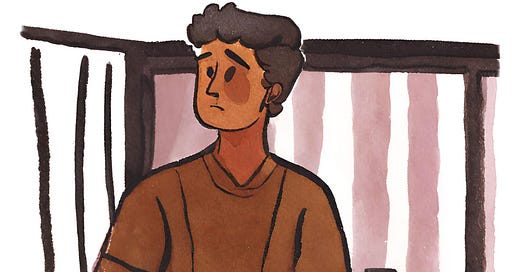How This Café Moment Taught Me About Privilege
Building Bridges between Hearing and Deaf Communities
In the heart of Gallaudet University’s lively campus, I stood frozen. A café, a simple place to grab lunch, yet it became an unexpected challenge. The man in front of me effortlessly signed his order to the barista, fitting into the deaf culture thriving in this university.
Gallaudet stands out for ensuring deaf and hard-of-hearing students get the same chances as anyone else. This Washington DC campus is a haven where they don’t face the usual barriers around accessibility. I was thrilled to be attending a conference on this campus, reveling in the university’s dedication to promoting and preserving American Sign Language (ASL). Yet, I hadn’t realized how navigating this unique space would be for me as a hearing person.
Caught off guard, my turn came and a series of thoughts circled my head. How do I order without knowing ASL? Should I point at the menu? Speak and rely on lip reading? Nervousness and embarrassment washed over me.
The woman taking orders gracefully signed to me, only to realize my unfamiliarity with ASL. Without a hint of frustration, she slid over a pen and paper. I scribbled my order, and with a smile, she conveyed it to the kitchen. Yet, despite her hospitality, a sense a shame lingered.
Much like Americans traveling abroad and hoping others will know English for smoother interactions, I realized my ignorance carried privilege. Never before have I had to contemplate how I communicate with retail workers or anyone for that matter. Social interactions typically center around spoken language and sound, making it seamless for me to engage. Unlike those in the deaf community, I’ve never had to inquire about resources catering to deaf individuals within educational institutions or workplaces, simply because I am a hearing person.
The world functions like a campus designed for hearing people, highlighting the special nature of places like Gallaudet University. I’m sure the barista likely handled such encounters often, given her role in a café on a campus hosting many conferences. However, it was crucial for me to recognize that this was her space, and I needed to approach it differently than I would in any other space.
While I recognize that learning ASL is no easy feat, I realize that even taking small steps could have eased the communication gaps, sparing her from bridging the divide entirely. Learning a few signs, understanding the importance of eye contact and clear expressions, or even having a pen and paper on hand to demonstrate my effort would have been beneficial.
This moment for me was supposed to be just ordering lunch, but it ended up being something more. It taught me to recognize the privilege embedded in our everyday interactions and take steps to bridge the gaps, even if just with a sincere attempt to understand.





